In the vibrant realm of coffee culture, one debate often perks up among enthusiasts and connoisseurs alike: Aeropress vs French Press. Each brewing method promises a distinct flavor profile and user experience, making it a perpetual subject of deliberation. The French Press, revered for its timeless elegance and robust flavor delivery, offers a full-bodied brew that can be both a morning pick-me-up and an after-dinner delight. In contrast, the Aeropress stands out with its inventive and portable design, delivering a consistently delightful cup of coffee that is clean, rich, and exceptionally smooth.
But is one really better than the other? Or is it simply a matter of personal preference? In this comprehensive guide, we will take a deep dive into the world of these two iconic brewing methods. We’ll explore their history, unravel the intricacies of their brewing techniques, delve into their flavor profiles, and assess their cleanup process. We’ll even examine the surprising impact your choice may have on your health.
Whether you are a seasoned barista or a curious coffee enthusiast, this exploration of Aeropress and French Press will serve as your detailed roadmap to brewing perfection. Brace yourselves, coffee lovers! It’s time for a brewing showdown. Let the battle of the presses begin!
Aeropress vs French Press: Key Takeaway
- Brewing Methodology: The French Press and Aeropress use distinct brewing methods. The French Press relies on immersion brewing, giving a robust, full-bodied coffee, while the Aeropress combines immersion and pressure, resulting in a clean, full-flavored brew.
- Flavor Profiles: Coffee brewed with the French Press presents a rich and bold flavor, while Aeropress offers a smoother and less acidic taste. However, the grind size, brewing time, and quality of beans can significantly influence the flavor profiles.
- Cleanup and Maintenance: The Aeropress is easier and quicker to clean due to its design, whereas the French Press requires more meticulous cleaning to remove coffee grounds trapped in the mesh filter. Both require routine maintenance to ensure longevity.
- Health Considerations: There are health implications associated with both methods. French Press coffee contains more cafestol, which can raise LDL cholesterol levels. The Aeropress, using a paper filter, captures more of this compound, potentially making it a healthier option.
- Final Verdict: The choice between the Aeropress and French Press depends on individual preferences related to taste, brewing process, cleanup, and health considerations. Both offer unique benefits and deliver a satisfying coffee experience.
History and Background
In the realm of coffee brewing, the path to perfection has been a journey spanning centuries, with various techniques and devices crafted over time to capture the perfect brew. As we compare the Aeropress and French Press, it’s crucial to first understand their respective histories. This exploration not only illuminates their design philosophy but also their impact on coffee culture. From the birth of the French Press in the mid-19th century to the more recent introduction of the Aeropress, let us embark on a journey through time to delve into the captivating history and background of these beloved brewing methods.
The Birth of the French Press

The French Press is a widely recognized coffee brewing apparatus that goes by various names across the globe, including coffee press, press pot, coffee plunger, and cafetière in Britain and Ireland. In the year 1852, Jacques-Victor Delforge and Henri-Otto Mayer, both from France, secured the initial patent for its fundamental design, marking the inception of this remarkable innovation. (1)
From Simple Arrangement to Modern Device
Originally, the press pot began as a basic arrangement consisting of a rod attached to a metal or cheesecloth screen. However, over time, it underwent numerous design changes, progressively transforming into the cherished device we are familiar with today. A notable advancement took place when Marcel-Pierre Paquet dit Jolbert introduced a version that eliminated the need for a seal around the filter. This particular design was officially patented on 5th of August, 1924, marking a significant milestone in the evolution of the press pot.
Innovation and Recognition
During the year 1928, Giulio Moneta and Attilio Calimani, both esteemed designers hailing from Milan, created a coffee press with an innovative spring mechanism to ensure a secure seal around the filter. Their design, brimming with innovation, earned them a well-deserved patent in the USA in the year 1929, solidifying their place in the annals of creativity and invention. However, Faliero Bondanini was the individual who secured the most widely recognized patent for the coffee press in 1958. The manufacturing of this exceptional design occurred at the esteemed French clarinet factory, Martin SA, under the prestigious brand name Melior. The Melior coffee press swiftly gained immense popularity and even made a memorable appearance in the 1965 movie “The Ipcress File,” starring the legendary Michael Caine.
Modern French Press Design
In the present day, the contemporary French press coffee maker is commonly comprised of a sleek, cylindrical vessel, typically crafted from glass or transparent plastic. It is accompanied by a plunger and lid made of either metal or plastic. The plunger is ingeniously designed with a fine filter, guaranteeing impeccable filtration as you brew your coffee.
- Make Café-Worthy Coffee – The ESPRO P7 Coffee Presses are engineered to brew you a smoother, flavorful cup of coffee that’s fresh from first drop to last; letting you be your own coffee hero at home.
- Note: 1)Too coarse a grind, too little coffee, or insufficiently tamping the grounds before brewing can all lead to inadequate pressure for a proper brew. 2)It is important to note that the amount of espresso extracted will vary depending on the grind size and amount and reprogramming may be needed when the size and amount are adjusted
- Note: 1)Too coarse a grind, too little coffee, or insufficiently tamping the grounds before brewing can all lead to inadequate pressure for a proper brew. 2)It is important to note that the amount of espresso extracted will vary depending on the grind size and amount and reprogramming may be needed when the size and amount are adjusted
- ☕️ Sleek and stylish design: Our glass coffee press boasts an elegant and timeless design that will complement any kitchen decor. Its transparency allows you to see your coffee as it brews, adding a touch of sophistication to your morning routine.
- Take it Anywhere – Our rust-free french press-stainless steel-is durable for use while camping, at the office, or making coffee at home. The double-walled carafe on this MuellerLiving French Press keeps your coffee hot and full of flavor.
The Inception of the Aeropress
In stark contrast to the historical roots of the coffee press, the Aeropress represents a relatively modern advancement in the realm of coffee brewing. It was invented by Alan Adler, founder of AeroPress, Inc., and a retired Stanford engineering lecturer. With its syringe-like appearance, the Aeropress boasts a cylindrical chamber accompanied by a plunger equipped with an airtight silicone seal. Within this chamber, ground coffee beans and water intertwine, steeping together before being propelled through a filter by pressing the plunger. This process results in the creation of intensely concentrated coffee. (2)
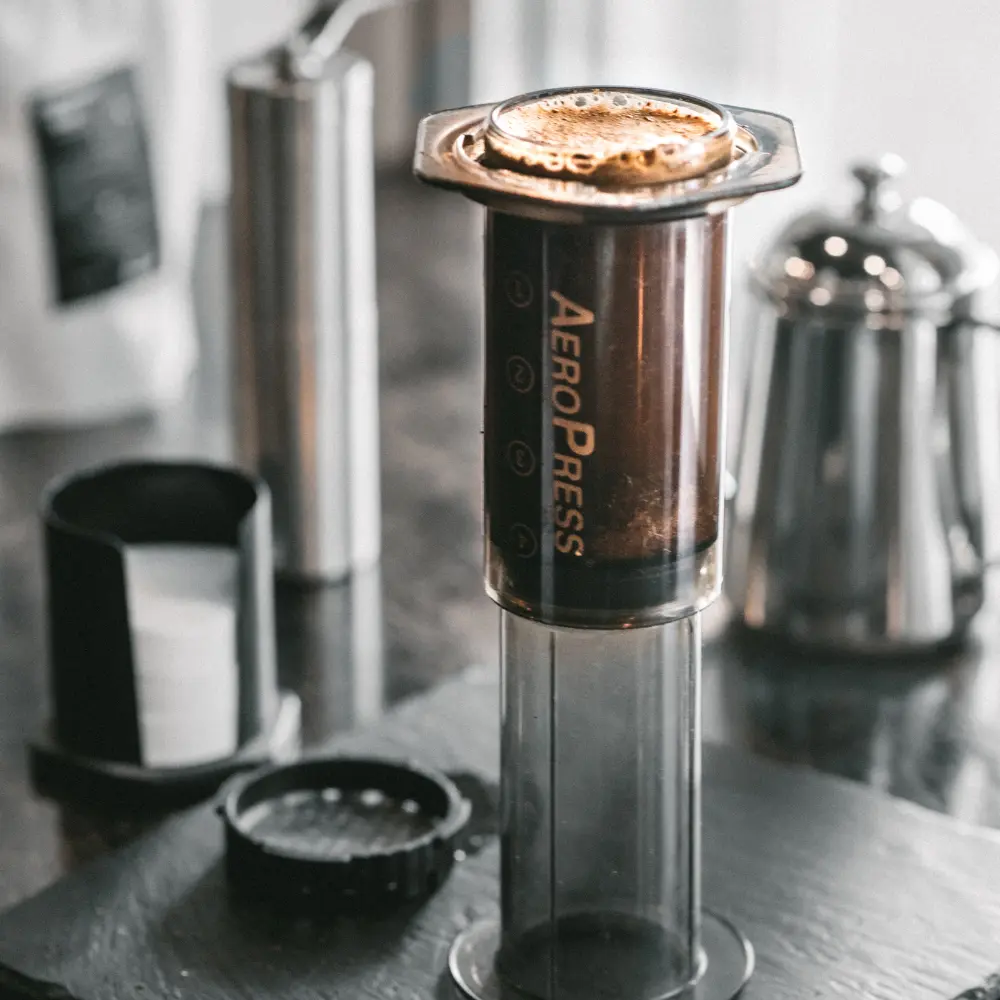
Adler began developing this unique Aeropress coffee maker in 2004, driven by a desire to reduce the acidity and bitterness in his daily coffee. Dissatisfied with the lack of control offered by other brewing methods, he aimed to create a device that allowed more control over brewing parameters like brew time, water temperature, and grind size. His invention, prototyped in his garage, consisted of a translucent cylindrical chamber and a plunger, along with a filter cap to hold a round paper filter in place.
Over the years, AeroPress has seen several changes in materials used for production, from the initial use of polycarbonate to the switch to BPA-free copolyester in 2009, and then to polypropylene in 2014. By 2019, AeroPress, Inc. had introduced the AeroPress Go, a travel-sized model, and in 2023, the AeroPress Clear made of Tritan was launched.
The Impact on Coffee Culture
The French Press and Aeropress, each with its unique attributes and brewing processes, have made significant contributions to the evolution of coffee culture worldwide. The press pot, with its traditional charm and rich, full-bodied brew, has long been a favorite among coffee aficionados. With its enduring legacy and timeless brewing technique, it has become an essential element in the realm of coffee brewing.
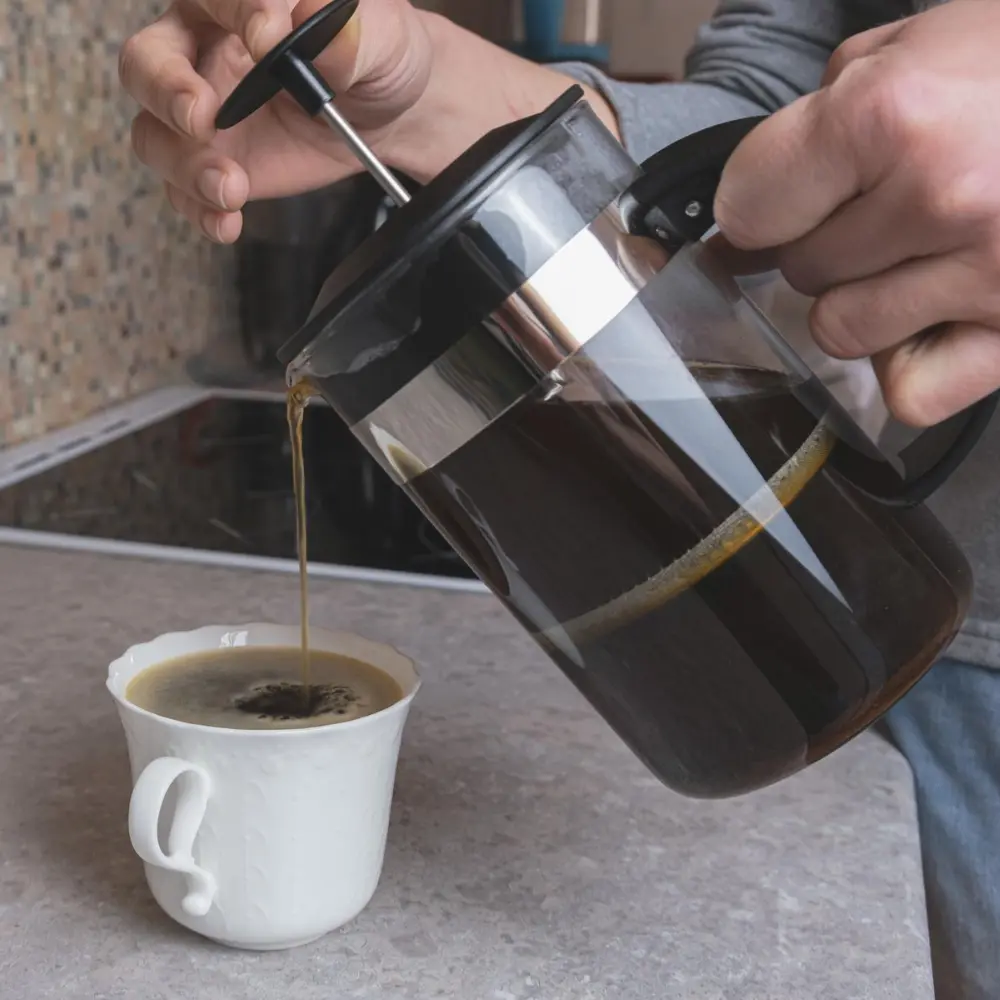
On the other hand, the Aeropress, with its innovative design and versatile brewing capabilities, has been a game-changer, captivating the attention of a new generation of coffee enthusiasts. By allowing for a greater degree of control over the brewing process, the Aeropress offers a tailored coffee experience that caters to a wide variety of taste preferences.
- CRYSTAL CLEAR, SHATTERPROOF TRITAN: Our iconic press, made with the same patented technology, available in crystal clear, shatterproof Tritan. Cool enough for display, tough enough for the road.
- UNIQUELY DELICIOUS: No more average joe from fancy, expensive machines. By combining the best of several brew methods into one patented device, you get smooth, rich, grit-free coffee with a delicious, full-bodied finish that lingers well after your last sip. No bitterness. No cream needed.
- An Amazing Cup, Now On The Go: Take the AeroPress Go with you and enjoy a truly delicious coffee wherever you go. The AeroPress Go is slightly smaller than the AeroPress Original, but can still produce 1-3 servings of espresso-style coffee, and it features a handy mug and lid that double as a traveling case, making it perfect for the office, traveling, camping, boating and more
- Professional-Grade Coffee Right at Home: A household name amongst baristas and coffee enthusiasts worldwide, the AeroPress Original is a new kind of coffee press that uses a rapid, total immersion brewing process to make smooth, delicious, full-flavored coffee without bitterness and with low acidity. The AeroPress Original brews a full-bodied coffee with maximum flavor every time!
Regardless of the brewing method you choose – be it the historic charm of a French press maker or the contemporary appeal of an Aeropress coffee maker – one thing is certain. Both these devices offer a unique and delightful journey into the art and science of coffee brewing, profoundly shaping the coffee culture as we know it today.
The Art of Brewing: Methodology Compared
Just as a painter applies brush to canvas, so does the coffee lover approach the act of brewing, using technique and precision to craft the perfect cup. The cafetière and Aeropress, while both brewing methods, offer distinct experiences, emphasizing different aspects of the brewing process. Below, we delve into the step-by-step methodologies of these two brewing methods and explore how they impact the final taste.
Brewing with the French Press
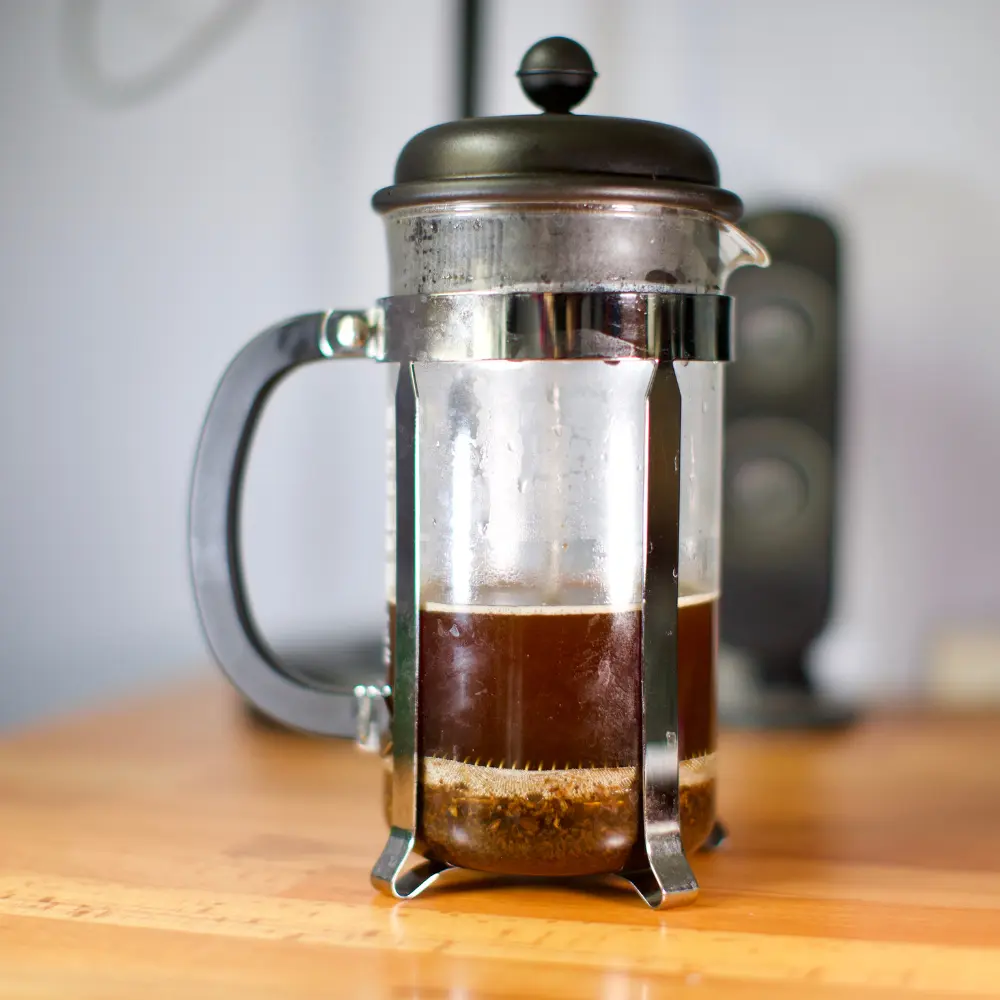
The press pot brewing method is rooted in simplicity and patience, ensuring a full-bodied and robust brew. To understand how to use a French Press, one must appreciate the process:
- To begin, commence by grinding your coffee beans to a coarse texture, resembling the likes of salt (kosher).
- Next, bring a larger amount of filtered water to a boil than you will actually need for your coffee. Take about 8 oz. of this boiled water and use it to preheat the coffee press.
- Now, take the remaining water and pour it into your cups, allowing it to gently warm them beforehand.
- Measure approximately 60 grams of the coffee that’s coarsely ground and pour it into the press pot, aiming for a coffee-to-water ratio of 1:12.
- To bloom the coffee, pour a little bit of boiling water, ideally between 93 and 96 °C, over them. Allow them to bloom for about 30 seconds.
- After the waiting period, gently stir the coffee to ensure the grounds are well saturated, and then pour the rest of the hot water into the press pot.
- Position the plunger over the brewed coffee and begin a gradual downward push, stopping when it reaches the halfway mark. Then, carefully retract the plunger slightly, ensuring it remains slightly beneath the liquid’s surface, to prevent the formation of a crust from any dry coffee grounds.
- Let the coffee steep for approximately four minutes. However, feel free to adjust the steeping time to your personal preference. Four minutes is a good starting point.
- After the steeping time has elapsed, gently press the plunger downwards until it reaches a position half an inch above the layer of grounds at the bottom. Then, carefully pour out the water that was initially used to preheat the cups.
- Lastly, delicately pour the freshly brewed beverage into the cups that have been pre-warmed, eagerly awaiting its arrival.
In the realm of cafetières, the design conventionally abstains from exerting pressure on the grounds, allowing room to breathe at the bottom. When brewed coffee lingers with the spent grounds in the beaker, an intriguing metamorphosis takes place. Over time, a captivating blend of astringency and bitterness emerges, creating a distinctive flavor profile that holds a special appeal for devoted fans of the coffee press.
Brewing with the Aeropress
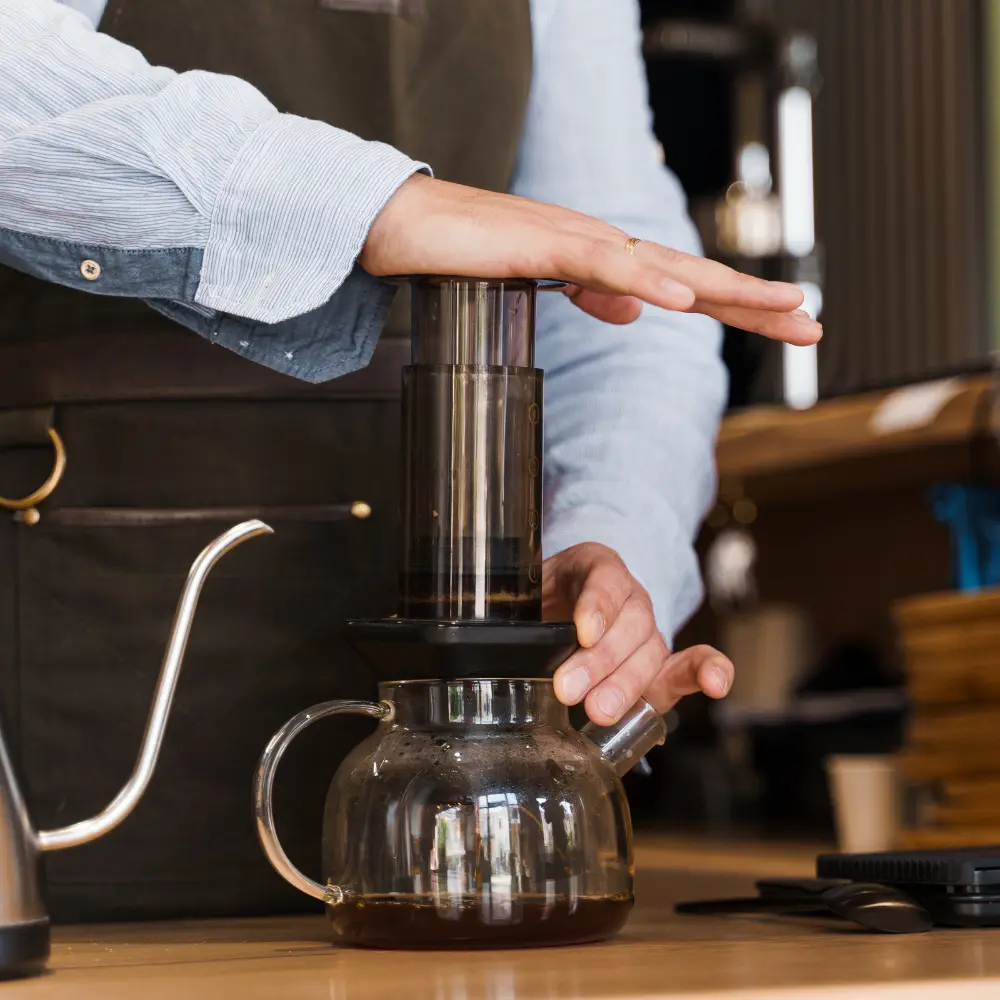
The Aeropress offers a unique method of brewing that is both innovative and quick. This manual brewing system involves pressure-based brewing, yielding a brew that is rich in flavor and lower in acidity. Here’s a look at how to use an Aeropress:
- Start by placing finely ground coffee at the bottom of the larger cylinder, on top of a paper microfilter.
- Pour hot water, typically at approximately 85 °C for dark roast coffee or 79 °C for lighter roast, over the coffee.
- Stir the mixture for around 10 seconds before pushing the plunger downwards, forcing the brew through the microfilter.
Apart from the traditional method, baristas and enthusiasts have also adopted the inverted brewing technique, which involves brewing the coffee upside down and then flipping it right before pressing.
The brew time for Aeropress is remarkably short, approximately 30 seconds, and it uses finely ground beans, similar to espresso. On the other hand, the press pot uses coarser grinds and a much longer brew time, without the application of pressure. Thus, the Aeropress offers a unique hybrid of espresso and French press brewing styles.
Time, Temperature, and Taste: A Trio in Brewing
Both French Press and Aeropress brewing methods place great emphasis on time, temperature, and the resulting taste. Understanding these parameters – from how to correctly measure and heat water to the optimal steeping time – is vital in crafting the perfect cup of coffee. These methods elevate the extraction process, unlocking the full potential of the grounds by capturing the essence of their rich flavors and oils, ultimately shaping the body, aroma, and taste of the coffee in your cup. Whether you’re seeking the robust, full-bodied brew from a coffee plunger or the smooth, rich coffee from an Aeropress, mastering these methods will certainly elevate your coffee brewing experience.
Flavor Profiles: A Delectable Journey
The world of coffee is a rich tapestry of aromas, tastes, and sensations. The way coffee is brewed plays a pivotal role in the flavor profiles that end up in your cup. As we venture into the delicious complexities of Aeropress vs French Press, it’s worth taking a closer look at how these methods bring out distinct flavors and experiences.
Unveiling the French Press Flavors
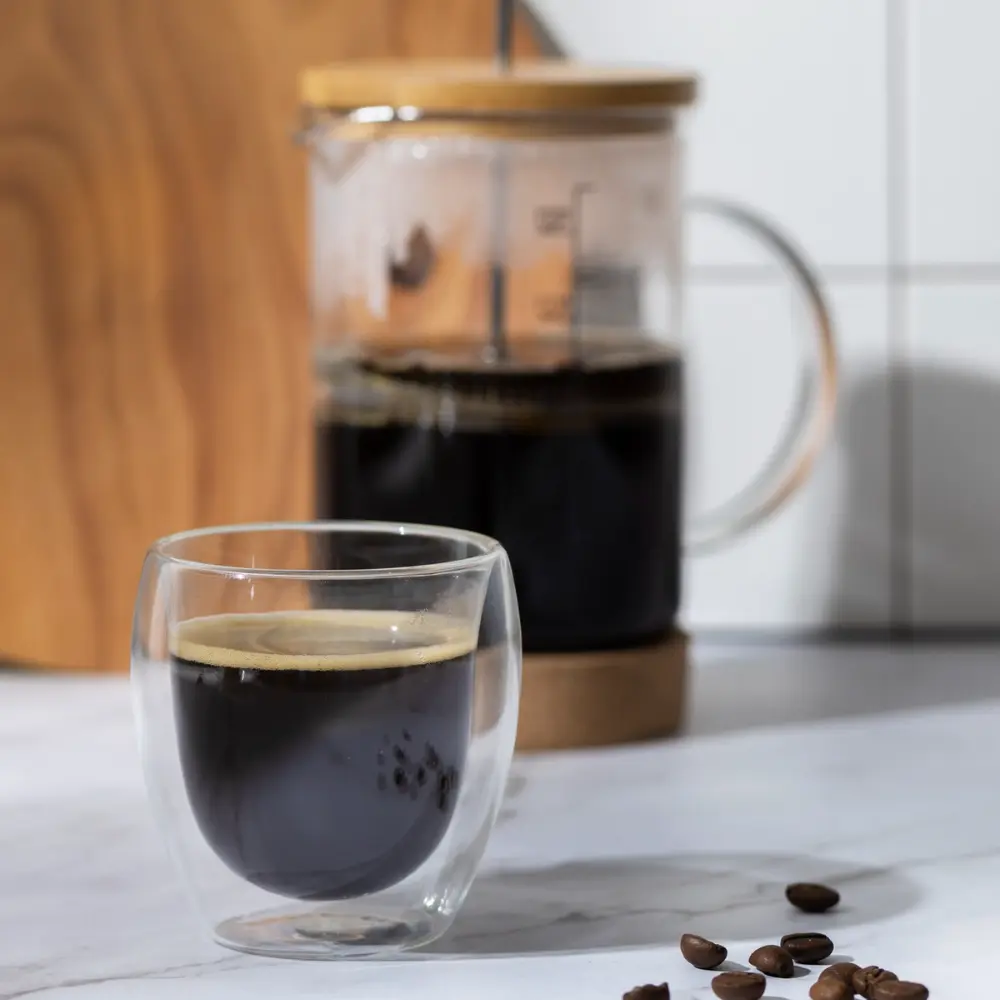
The press pot brewing method is renowned for its ability to produce a full-bodied, rich, and deeply flavored cup of coffee. This is primarily due to the immersion brewing technique and the use of a metal filter. Immersion brewing allows the grounds to steep in hot water for an extended period of time, leading to a more complete extraction of the flavors.
In addition, the metal filter allows the oils and small particles from the grounded coffee to pass through into the final brew. This results in a thicker, bolder coffee with a significant mouthfeel. The coffee often carries strong notes of chocolate, nut, and other earthy flavors that are sometimes lost in other brewing methods. It’s not uncommon to find some silt at the bottom of your cup which adds to the tactile experience of drinking press-pot coffee.
Aeropress Taste Expedition
In the Aeropress corner, the story is a little different. Aeropress brewing involves pressure, akin to espresso brewing, resulting in a cup of coffee with heightened clarity and brightness. The flavors are clean, smooth, and articulate, often highlighting the more subtle, nuanced notes in the coffee. You might detect a wider spectrum of flavors like citrus, berry, or floral notes, especially if you’re brewing with lightly roasted, single-origin beans.
Aeropress coffee is typically lower in the body compared to French Press, and with its paper filter, it removes most of the coffee oils and nearly all of the fine coffee particles. This results in a smoother, grit-free cup of coffee that lets the innate flavors of the coffee beans shine through.
Factors Influencing Flavor: Grind Size, Brew Time, and Beans
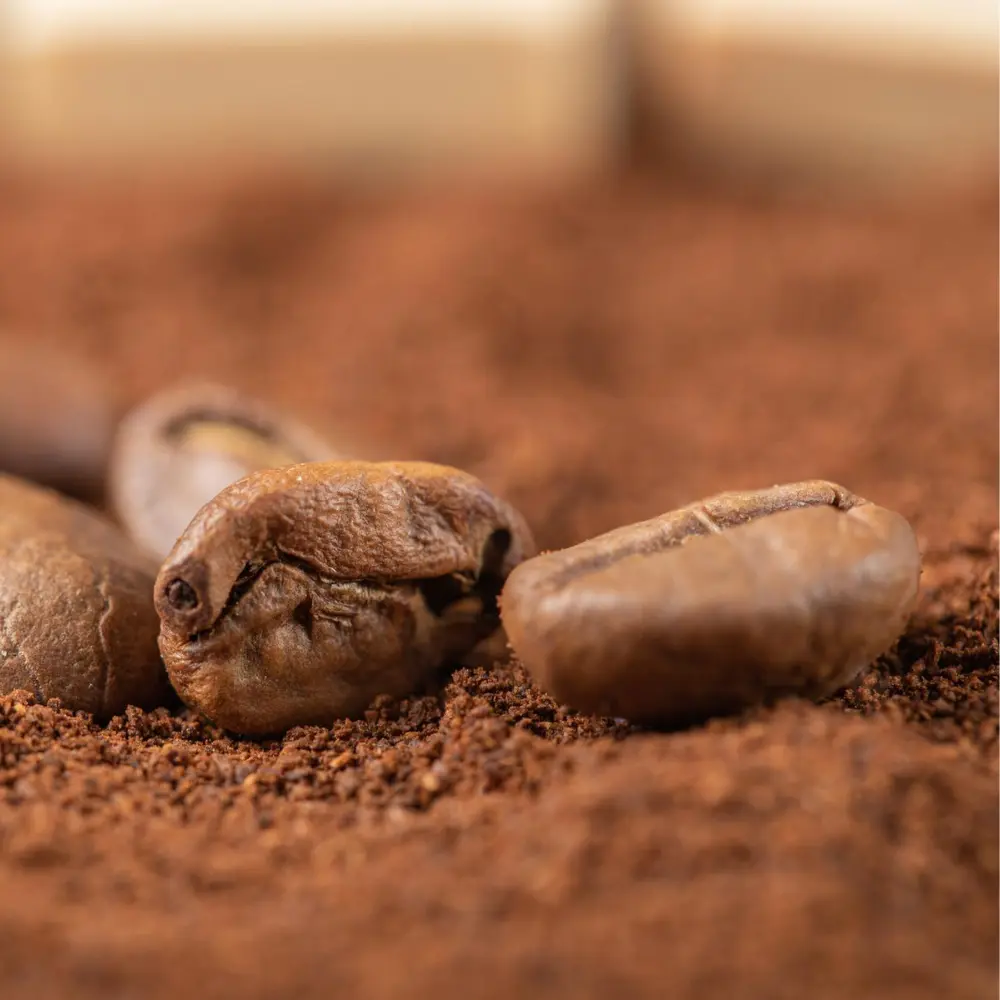
Regardless of your brewing method, the flavor in your cup is influenced by several key factors. In our exploration of Aeropress vs French Press, these factors come into sharp relief.
- Grind Size: The coffee grind size can dramatically alter the taste of your coffee. A coffee plunger requires a coarser grind to prevent the brew from becoming over-extracted and bitter, as well as to avoid too much silt in your cup. On the contrary, an Aeropress benefits from a fine to medium-fine grind, to ensure optimal flavor extraction in its short brew time.
- Brew Time: Brew time plays a significant role as well. With a press pot, the coffee steeps for around 4 minutes, allowing for a full extraction of flavor. The Aeropress, however, has a much shorter brew time (around 30 seconds to 1 minute), utilizing pressure to extract flavors quickly and efficiently.
- Beans: The choice of coffee beans will also impact the final flavor. Darker roasts with bold, robust flavors tend to work well with French Press brewing. On the other hand, the Aeropress can highlight the intricate flavors of lighter roasts and single-origin beans, making it an excellent choice for those who prefer a more nuanced coffee experience.
To sum up, both the French Press and Aeropress are capable of producing delicious coffee, but each offers a unique journey of flavors and experiences. The best choice ultimately depends on your personal taste preferences. Whether you’re seeking the robust, bold flavors of a coffee plunger brew or the clean, nuanced taste from an Aeropress, both brewing methods present an exciting exploration of coffee’s delightful complexity.
Cleanup and Maintenance: The Aftermath
Brewing coffee is an art, but like any artistic endeavor, there is often a mess left behind that needs tidying up. How easy or complex the cleanup process is can significantly influence your overall coffee-making experience. So, let’s compare the cleanup and maintenance aspects of the Aeropress vs French Press, and explore how to ensure longevity for both.
Cleaning the French Press: Steps and Tips

The coffee press, with its stylish design and metal filter, might seem daunting to clean, but with the right approach, it doesn’t have to be an arduous task. Here are the general steps:
- Dispose of the Coffee: Start by removing the plunger and discarding the spent coffee grounds. They are great for composting, so consider disposing of them in a compost bin if you have one. Be careful not to dispose of used coffee grounds in your sink, as they can clog the pipes.
- Rinse: Rinse out the carafe and the plunger assembly with warm water. This helps remove the leftover coffee residue.
- Disassemble and Clean: For deeper cleaning, disassemble the plunger to separate the filter screens and other parts. You can wash these parts with warm, soapy water, using a soft sponge to avoid scratching the surfaces. For the glass carafe, use a bottle brush to clean the interior.
- Dry and Reassemble: Thoroughly dry all the parts to prevent rusting, particularly on the metal filter and the plunger rod. Once everything is dry, reassemble the coffee plunger for your next brew.
Some tips for maintaining a French Press include:
- Avoid using abrasive cleaning materials that can scratch or damage the glass and metal parts.
- Regularly inspect the mesh filter for any damage or warping. A damaged filter can affect your brew and may need to be replaced.
Aeropress Cleanup: A Breeze?
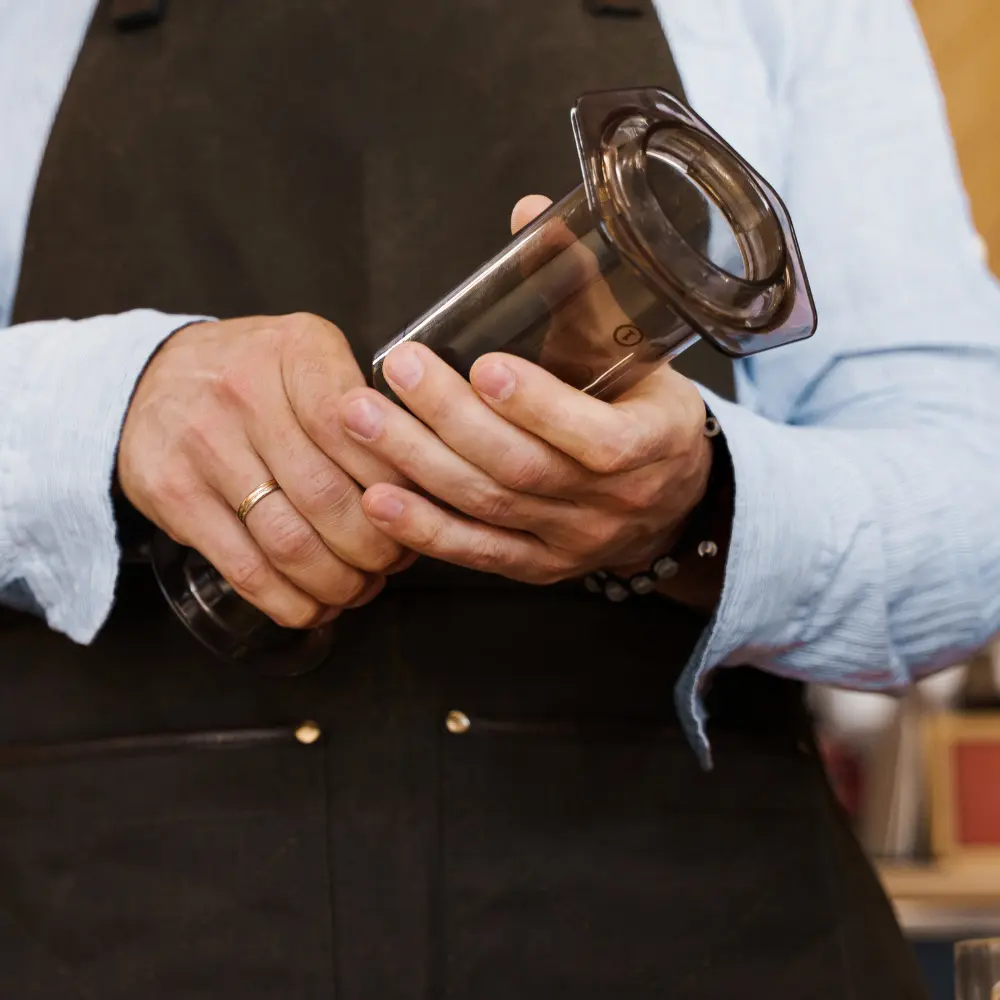
Cleaning an Aeropress is generally considered easier and faster compared to a press pot. The process involves these simple steps:
- Remove the Coffee Grounds: After brewing, unscrew the cap and push the plunger to eject the coffee puck and filter directly into a trash bin or compost pile.
- Rinse and Clean: Rinse the rubber plunger end, the chamber, and the cap under warm water. Because the Aeropress is made of plastic, you don’t need to worry about it breaking or rusting.
- Dry: Simply shake off excess water and leave the parts to air dry.
In terms of maintenance, Aeropress parts are quite durable. However, do check the rubber seal from time to time for any wear and tear.
Long-Term Maintenance: Ensuring Longevity
While both the French Press and Aeropress are fairly low-maintenance, there are still a few things you can do to ensure their longevity:
- Regular Cleaning: Regular cleaning is key to keeping your coffee equipment in good shape. Leftover coffee oils can accumulate over time and impart stale flavors to your brew.
- Safe Storage: Store your coffee maker in a dry, cool place when not in use. Moist environments can lead to mold or rust, especially in a coffee plunger.
- Timely Replacement of Parts: Over time, parts like the French Press’s mesh filter or the Aeropress’s rubber seal may wear out. Timely replacement of these parts ensures that your brewing equipment performs optimally.
To sum it up, the Aeropress generally wins the ease-of-cleanup round in the Aeropress vs French Press comparison, thanks to its simple design and durable materials. However, with a bit of care and attention, both brewing methods.
Coffee Health Benefits: More Than Just a Cup of Joe
A morning coffee ritual can do more than just wake you up – it can also offer health benefits when consumed in moderation. However, it’s crucial to recognize that the brewing method can have an impact on these benefits. Here we delve into the health considerations related to coffee brewed using the Aeropress and French Press methods, considering factors like cholesterol levels, antioxidants, and more in our exploration of Aeropress vs French Press.
Health Considerations with French Press Coffee
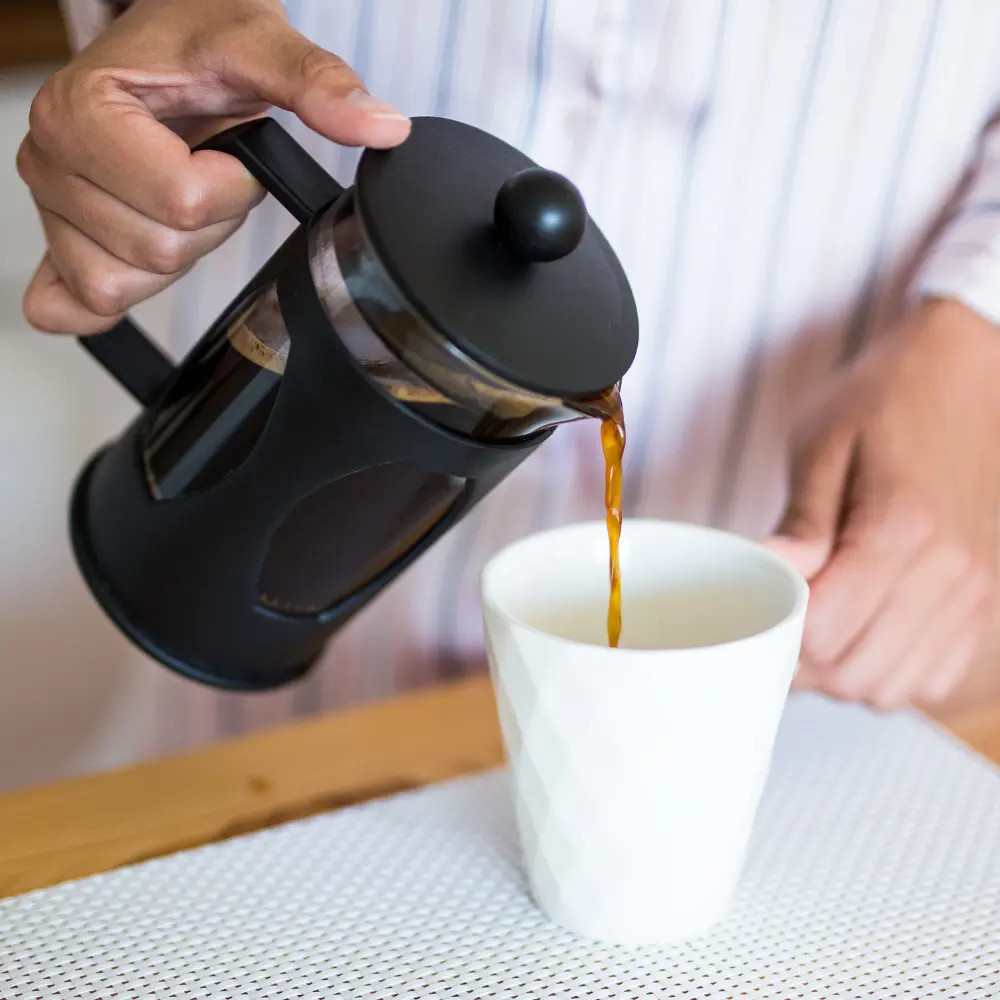
The coffee plunger brewing method, with its metal mesh filter, allows more oils and fine particles to pass through into the final cup compared to methods that use paper filters. These oils, known as diterpenes, contribute to the rich flavor profile that French Press enthusiasts love. However, these oils, notably cafestol, and kahweol, can increase LDL cholesterol levels when consumed in large amounts. This has led to concerns about whether press pot coffee could be bad for you, particularly for individuals with high cholesterol.
On the flip side, coffee contains numerous beneficial compounds like antioxidants, which can fight inflammation, reduce the risk of several diseases, and boost brain health. Press pot coffee, due to its extraction method, generally retains more of these beneficial compounds.
Aeropress and Health: The Connection
The Aeropress method uses paper filters, which can effectively remove most of the diterpenes found in coffee. This results in coffee with considerably lower amounts of cafestol and kahweol, potentially making Aeropress coffee a healthier choice for those with cholesterol concerns.
Moreover, the Aeropress method’s rapid brewing time may help in preserving certain antioxidants, ensuring that your cup still provides some health benefits. It’s also worth noting that Aeropress coffee is typically less acidic than its French Press counterpart, which may be a boon for those with sensitive stomachs.
Can Your Brew Method Affect Your Health?
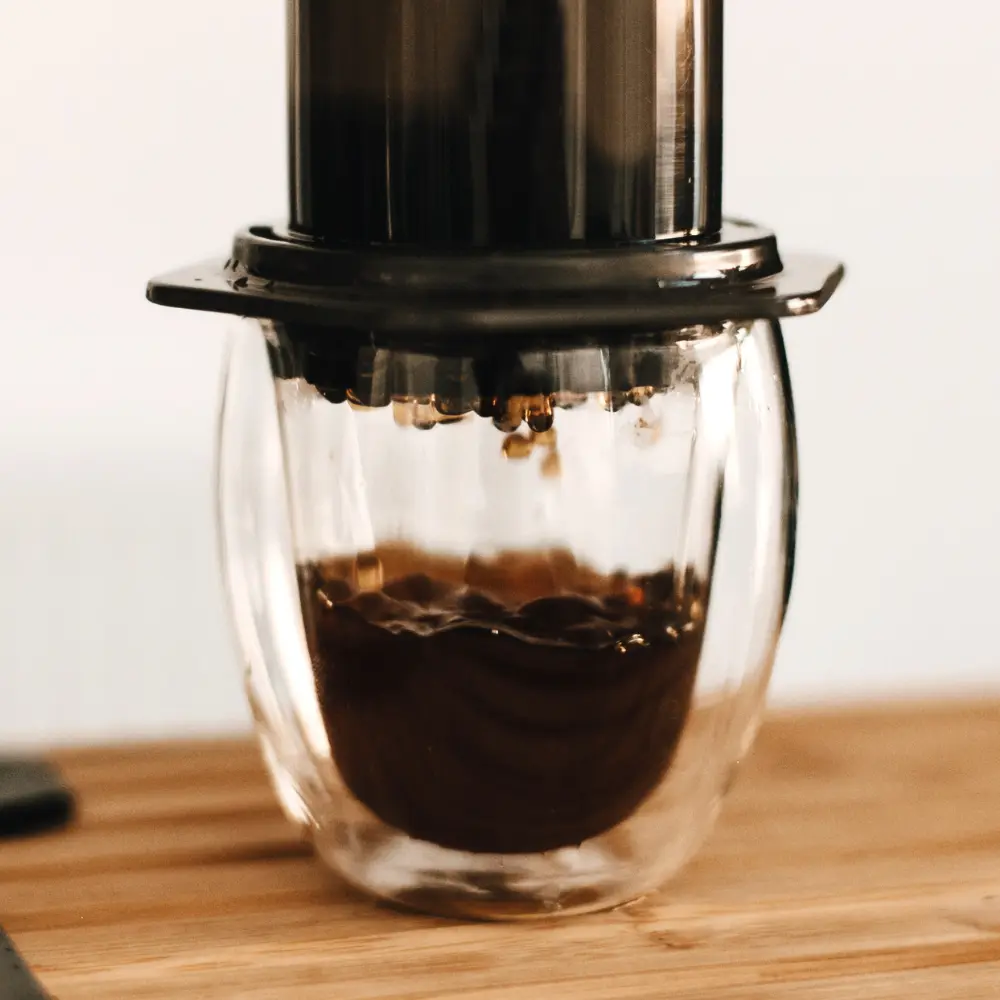
The answer is yes. The brewing method can indeed impact the health aspects of your coffee, largely due to the filtration method and brewing time. As discussed earlier, metal filters, as in a coffee press, allow more oils and tiny coffee particles into your brew. This results in a fuller-bodied coffee with higher amounts of diterpenes, which can affect cholesterol levels.
On the other hand, paper filters, as used in the Aeropress, catch most of these oils and fine particles, resulting in a cleaner, smoother cup with fewer cholesterol-raising substances. Additionally, the time coffee and water are in contact also affects the extraction of both beneficial and potentially harmful compounds.
Both the French Press and Aeropress have their pros and cons when it comes to health considerations. The coffee plunger might be more flavorful but could pose problems for those with high cholesterol. Meanwhile, the Aeropress is a safer bet for cholesterol-conscious coffee drinkers but may lack the full-bodied richness of a press pot brew. The ultimate choice between Aeropress vs French Press will depend on personal health needs, taste preferences, and lifestyle considerations. As with all things, moderation is key, and it’s always wise to consult with a healthcare professional about any health-related concerns.
Conclusion: Aeropress vs French Press: Battle of the Presses
The world of coffee is vast and varied, with the brew method being a pivotal factor in shaping your cup’s taste, body, and even potential health benefits. In the comparison of the Aeropress vs French Press, both brewing methods have distinct attributes that appeal to different types of coffee lovers.
The press pot is revered for its ability to create rich, full-bodied coffee with a deep flavor profile, making it a favorite among those who enjoy a robust cup. The freedom to control the steeping time and the ease of brewing multiple cups at once adds to its allure. However, the potential for higher LDL cholesterol levels due to the unfiltered brew and the more intensive cleanup process are factors to consider.
On the other hand, the Aeropress shines with its quick brewing process, producing a cleaner, smoother cup with less acidity, making it a healthier choice for those with cholesterol concerns or sensitive stomachs. Its compact design and easy cleanup also make it ideal for those constantly on the move.
The choice between an Aeropress and a French Press ultimately boils down to personal preference, lifestyle, and health considerations. Both methods have their unique attributes and cater to different taste preferences and needs. So, whether you prefer the robust richness of a coffee plunger or the smooth, clean taste of an Aeropress brew, the journey of exploring and experimenting with these brew methods can enhance your appreciation of coffee’s delightful nuances.
The battle of Aeropress vs French Press is not about deciding a winner. Instead, it’s about understanding the differences, embracing the variety, and finding the perfect brew that brings joy to your coffee-loving soul. After all, at the end of the day, the best coffee is the one that tastes right to you.
FAQ
How does the brewing method affect the taste of coffee?
The brewing method directly affects the extraction process, thereby influencing the coffee's body, flavor, acidity, and overall taste profile.
How easy is it to clean an Aeropress compared to a French Press?
Cleaning an Aeropress is generally easier and quicker due to its design, whereas a French Press requires more thorough cleaning to remove coffee grounds stuck in the mesh filter.
Are there health differences between coffee brewed in an Aeropress and a French Press?
Yes, French Press coffee contains more cafestol, a substance that can increase LDL cholesterol levels, whereas Aeropress, using paper filters, captures more of this compound, making it a potentially healthier choice.
Which is better for home brewing: Aeropress or French Press?
Both are excellent for home brewing; the choice depends on personal preferences in terms of taste, brewing process, cleanup, and health considerations.





















